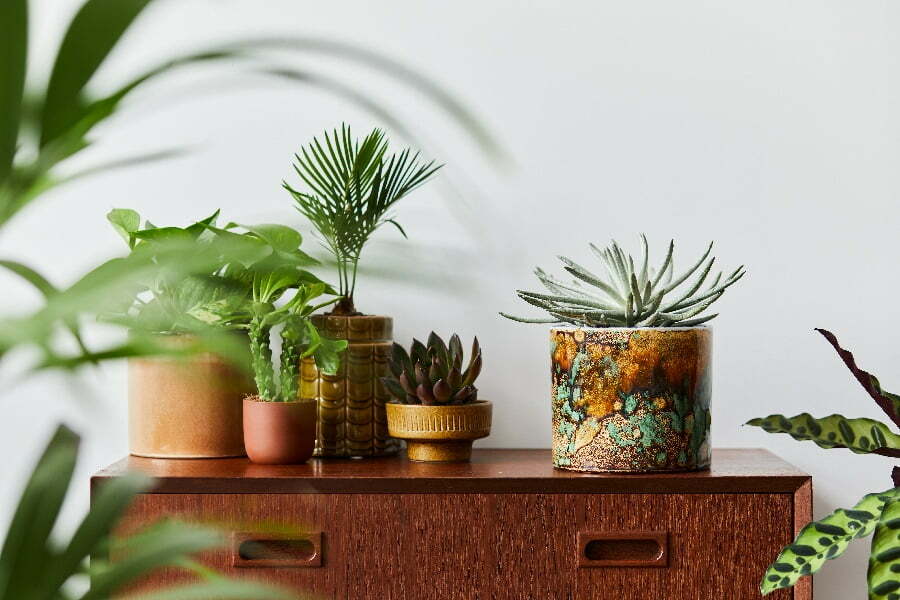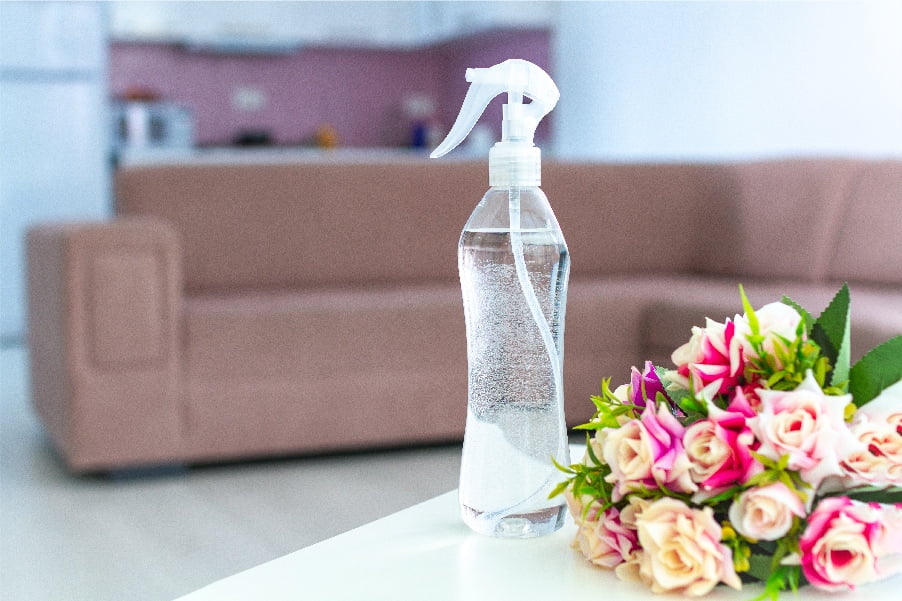The best types of plants for improving indoor air quality are spider plants, peace lilies, English ivy, bamboo palm, rubber plants, and aloe vera.
Indoor air quality is a growing concern for many people in today’s world. Poor air quality can lead to a variety of health issues, including headaches, fatigue, and respiratory problems.
One way to improve indoor air quality is by introducing plants into your home or workspace. Plants are natural air purifiers that can help remove toxins from the air and improve your overall health.
In this blog post, we’ll explore the best types of plants to improve indoor air quality.
Houseplants and Air Quality

They absorb carbon dioxide and release oxygen, which helps to purify the air in your home. Houseplants also help reduce levels of pollutants such as formaldehyde, benzene, and trichloroethylene that can be found in many household products.
Houseplants can act as natural humidifiers by releasing moisture into the air through their leaves and roots. This helps to keep the air from becoming too dry or stale.
Some of the best types of plants for improving indoor air quality include spider plants, peace lilies, aloe vera plants, English ivy, snake plants, rubber trees and philodendrons. These varieties are known for their ability to filter out toxins from the environment while providing a pleasant aesthetic touch to any room in your home.
Air-purifying Plants
These plants act as natural air filters, absorbing pollutants and toxins from the air and releasing oxygen in exchange. They can help reduce levels of carbon dioxide, formaldehyde, benzene, trichloroethylene, xylene and ammonia in the home or office environment.
Some of the most popular air-purifying plants include spider plants, peace lilies, English ivy, aloe vera and bamboo palms. All these varieties have been proven to be effective at removing harmful chemicals from the air while also adding a touch of greenery to any room.
NASA Clean Air Study
The study aimed to identify plants that could help improve indoor air quality. The study found that certain plants were able to remove volatile organic compounds (VOCs) from the air, such as formaldehyde, benzene, and trichloroethylene.
These VOCs are common pollutants found in many homes and offices due to off-gassing from furniture, carpets, paint, cleaning products, and other sources. The NASA Clean Air Study identified several species of plants that can effectively reduce levels of VOCs in indoor environments.
These include English Ivy (Hedera helix), Spider Plant (Chlorophytum comosum), Bamboo Palm (Chamaedorea seifrizii), Peace Lily (Spathiphyllum spp.), Chinese Evergreen (Aglaonema modestum), Dracaena Janet Craig Compacta/Warneckii/Marginata varieties, Weeping Fig Tree (Ficus benjamina), Gerber Daisy(Gerbera jamesonii) , Snake Plant/Mother-in-Law’s Tongue(Sansevieria trifasciata laurentii). All these plants have been proven to be effective at removing VOCs from the air when placed indoors.
Spider Plants
They are easy to care for and require minimal maintenance, making them an ideal choice for those looking to add greenery to their home without having to worry about complicated upkeep. Spider plants have been found to be effective at removing toxins from the air, such as formaldehyde and carbon monoxide, which can be harmful if inhaled in large amounts.
Spider plants produce oxygen during photosynthesis which helps increase the amount of fresh air in your home. The long arching leaves of the spider plant also act as natural humidifiers by releasing moisture into the air when they transpire.
This helps keep your indoor environment more comfortable and healthy all year round.
Aloe Vera Plants
These succulent plants have a number of benefits that make them ideal for improving air quality in your home or office. Aloe vera is known for its ability to absorb carbon dioxide and release oxygen, which helps to purify the air.
Aloe vera can help reduce levels of formaldehyde and benzene, two common pollutants found in many homes and offices. The plant also has natural antibacterial properties that can help reduce airborne bacteria and other contaminants from the air.
Aloe vera emits a pleasant scent that can help create a more calming atmosphere indoors.
Peace Lilies
They are known for their ability to absorb pollutants from the air, such as formaldehyde and benzene. This makes them an ideal choice for improving the air quality in homes and offices.
Peace lilies also require minimal care, making them easy to maintain indoors. They thrive in indirect sunlight and need only occasional watering, so they don’t take up too much time or energy to keep alive.
Peace lilies produce white flowers throughout the year which can add a pleasant aesthetic touch to any room. All these factors make peace lilies one of the best types of plants for improving indoor air quality.
English Ivy
It is an evergreen vine with dark green, glossy leaves and small white flowers. English ivy has been found to reduce airborne mold spores, which can cause allergies and other respiratory issues.
It helps filter out pollutants such as benzene and formaldehyde from the air. This makes it an ideal choice for improving indoor air quality in homes or offices where these pollutants are present.
English ivy also requires minimal care; it only needs occasional watering and pruning to keep its shape and size under control.
Bamboo Palm Trees
These plants are easy to care for and can help filter out pollutants from the air. They have long, slender leaves that act as natural filters, trapping dust and other particles in their fibers.
The plant also releases oxygen into the air, which helps keep it fresh and clean. Bamboo palms require minimal maintenance; they only need to be watered once a week and should be placed in an area with indirect sunlight.
With proper care, these plants can last for many years and will continue to provide clean air indoors.




